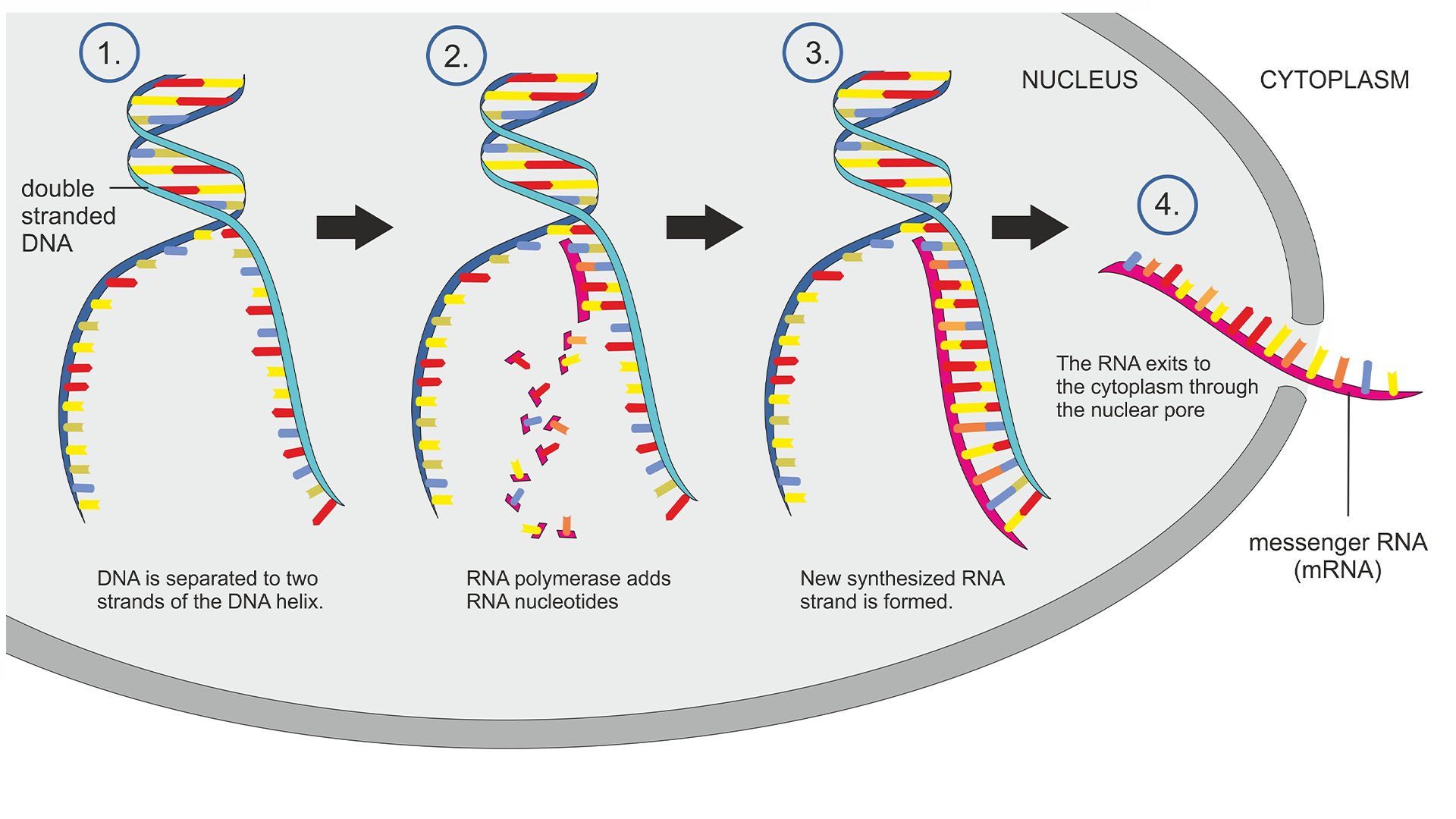[ad_1]
The human physique’s roughly 30 trillion cells do not want all of their genes switched on without delay. As a substitute, cells tightly management the exercise of their genes — and lately, scientists uncovered a beforehand unknown method they accomplish that feat.
Human DNA comprises roughly 20,000 to 25,000 genes. For a cell to operate correctly, the genetic code in that DNA is copied down, or transcribed, by an enzyme known as RNA polymerase to make a molecule known as RNA. Usually, the RNA is then translated into proteins, the constructing blocks of life. There are myriad components that decide which genes should be turned on, similar to the kind of cell and its stage of growth.
The latest examine, printed in February within the journal Molecular Cell, describes a newfound method by which cells management their genes. Known as backtracking, it was initially regarded as a response to breaks within the DNA, however it’s now being studied for its function in gene regulation.
Found in 1997, backtracking is a course of through which RNA polymerase, as a substitute of transferring ahead alongside the DNA because it reads a gene, shifts again and pauses. This halt then resolves and the enzyme can transfer forward once more, churning out RNA.
Associated: Scientists uncover hidden math that governs genetic mutations

“In early days, folks thought that after RNA polymerase begins transcription, it would end it with none issues,” Evgeny Nudler, a professor of biochemistry at NYU Langone Well being, instructed Reside Science. “Nonetheless, over time, they realized that the image is way more sophisticated.” Nudler and colleagues printed that first paper about backtracking in 1997.
When RNA polymerase backtracks a brief distance, it extrudes a strand of newly shaped RNA, inflicting the transcription course of to pause. This extruded RNA is usually chopped off by enzymes, leaving the trail clear for RNA polymerase to proceed ahead once more.
Nonetheless, typically, the polymerase strikes again an extended distance, and the extruded RNA blocks the positioning the place these chopping enzymes often snip. With this roadblock in place, the polymerase stays caught in its backtracked state for longer intervals, as a substitute of simply pausing for a short time.
Kevin Yang, a doctoral scholar within the Nudler Lab, and colleagues developed a brand new approach to seize the RNA strands extruded in persistent backtracking. The approach — known as long-range cleavage sequencing, or LORAX-seq — reads the RNA’s code to find out which genes are susceptible to this obvious hiccup in transcription. They developed this technique to raised detect backtracking occasions, and so they had been capable of decide up hundreds that might have been missed by earlier strategies.
“They’ve a really elegant technique that very particularly decide[s] out and identifies instances the place there’s been lengthy backtracking,” David Bentley, a professor on the College of Colorado who was not concerned within the examine, instructed Reside Science. “So even when they’re very uncommon, they have a really highly effective technique to tug them out.”
“For the primary time, we systematically mapped backtracked occasions,” Nudler instructed Reside Science. “And never simply any backtracking occasions, however these which had been in depth, the place polymerase backtracks for lengthy distances, will get caught for a very long time.”
Associated: People’ big-brain genes might have come from ‘junk DNA’
Whereas the group anticipated to search out backtracked occasions, they didn’t anticipate how prevalent they’d be. They noticed backtracking in lots of genes concerned in making proteins from RNA; regulating cell division; and copying and packaging DNA.
The hotspot for persistent backtracking cropped up close to gene promoters, that are the locations the place the RNA polymerase begins transcription, and splice websites, the place RNA is trimmed to take away components not wanted for making proteins.
However what, precisely, is the function of backtracking? The researchers suggest an intriguing principle: Backtracking might assist RNA polymerase, together with tons of of different proteins wanted for gene transcription, “pause” at promoters after which start pumping out RNAs as quickly as the necessity arises. In processes similar to cell division, throughout which large quantities of proteins are wanted, backtracking may enable for fast activation of genes at a second’s discover.
Nonetheless, Bentley famous that “the connection between backtracking and splicing is, I’d say, nonetheless unresolved.” So it is unclear if backtracking has a job on the splice websites.
The researchers additionally noticed that the genes encoding histones — proteins that DNA winds round like a spool — are very susceptible to backtracking. These genes should be very lively after DNA copies itself throughout cell division, and so this backtracking might assist time their activation at particular moments within the course of.
With LORAX-seq established as a brand new solution to detect backtracking, the strategy can now be used to check the function that the sort of gene regulation performs in human illnesses similar to most cancers, ageing, and extra broadly, any course of that places cells beneath stress.
Ever surprise why some folks construct muscle extra simply than others or why freckles come out within the solar? Ship us your questions on how the human physique works to group@livescience.com with the topic line “Well being Desk Q,” and you may even see your query answered on the web site!
[ad_2]
Supply hyperlink

